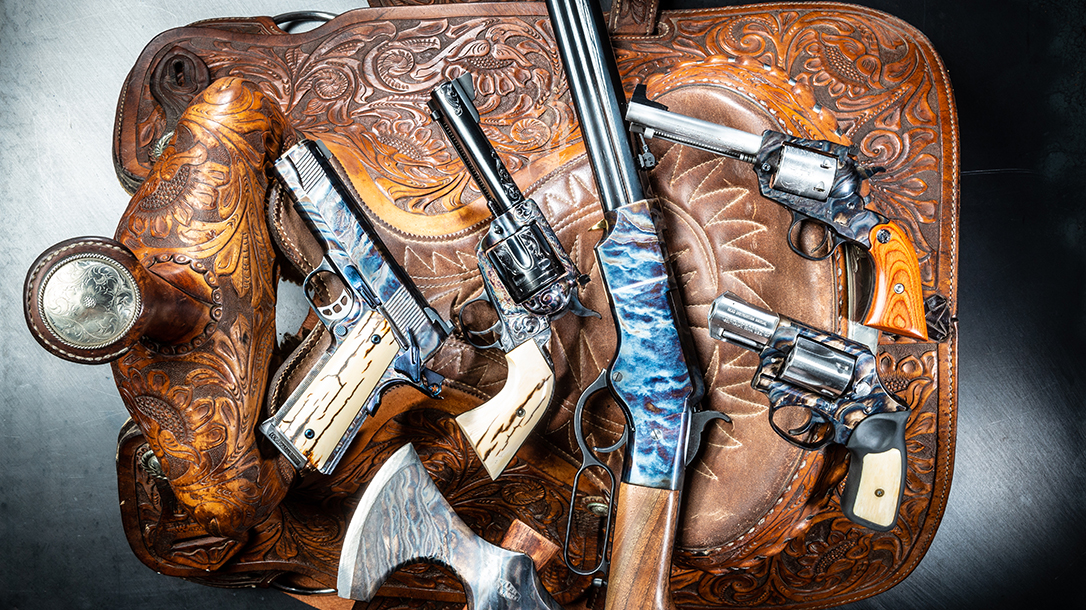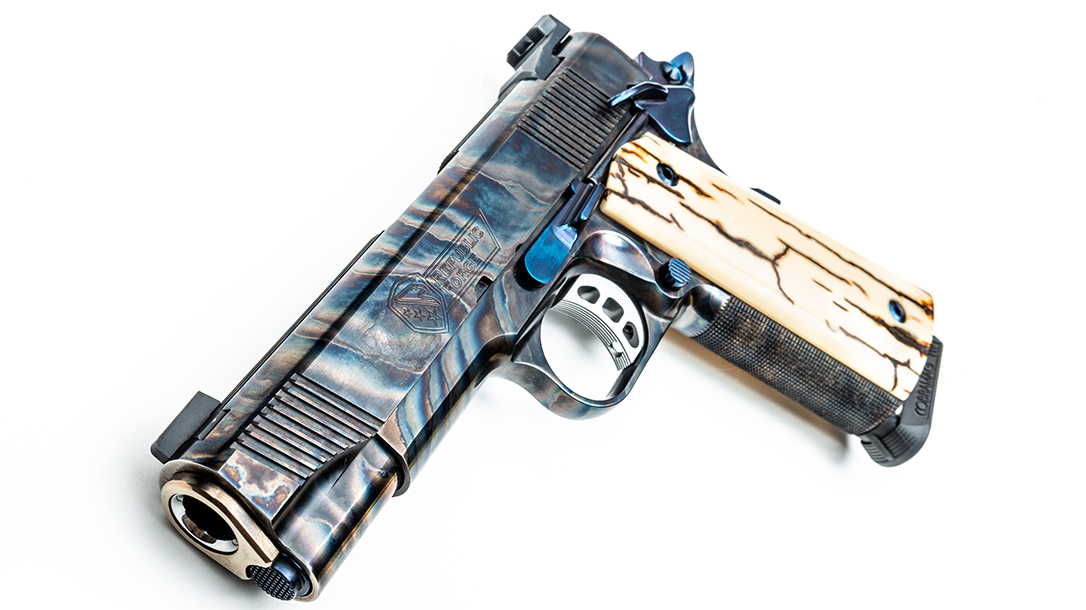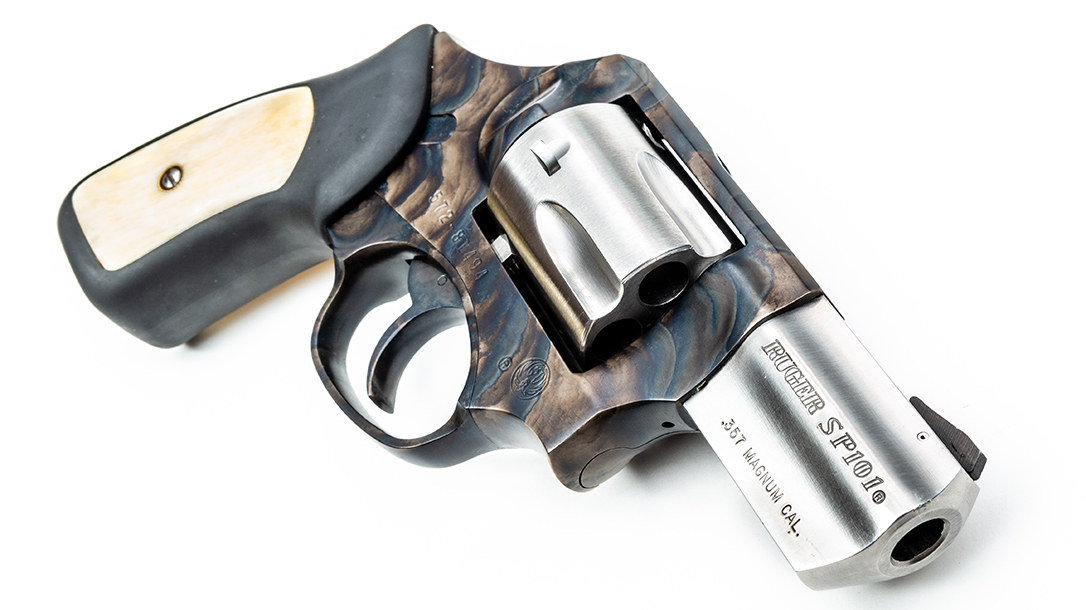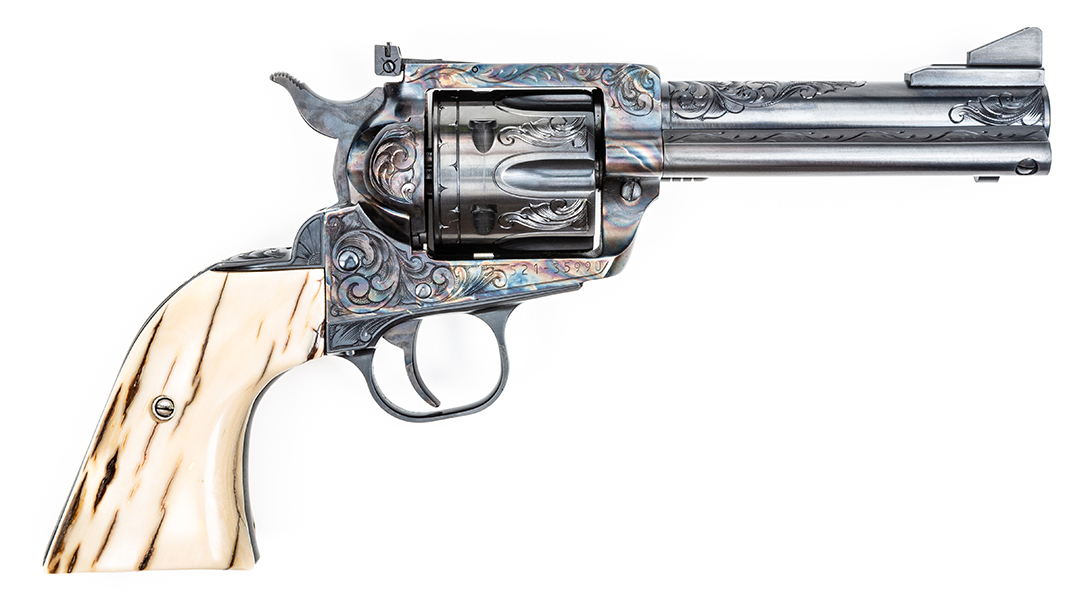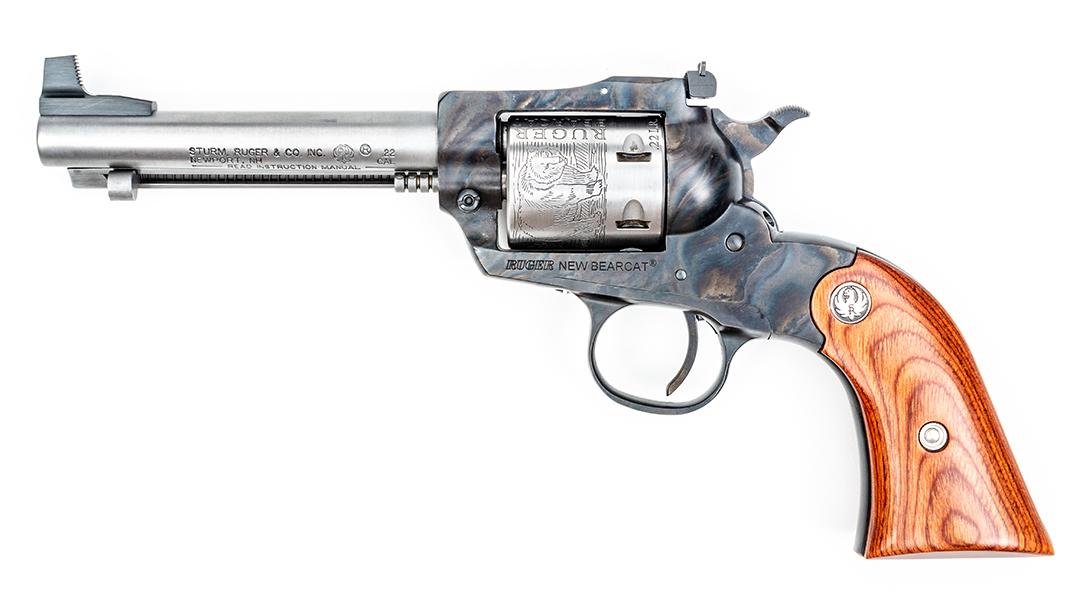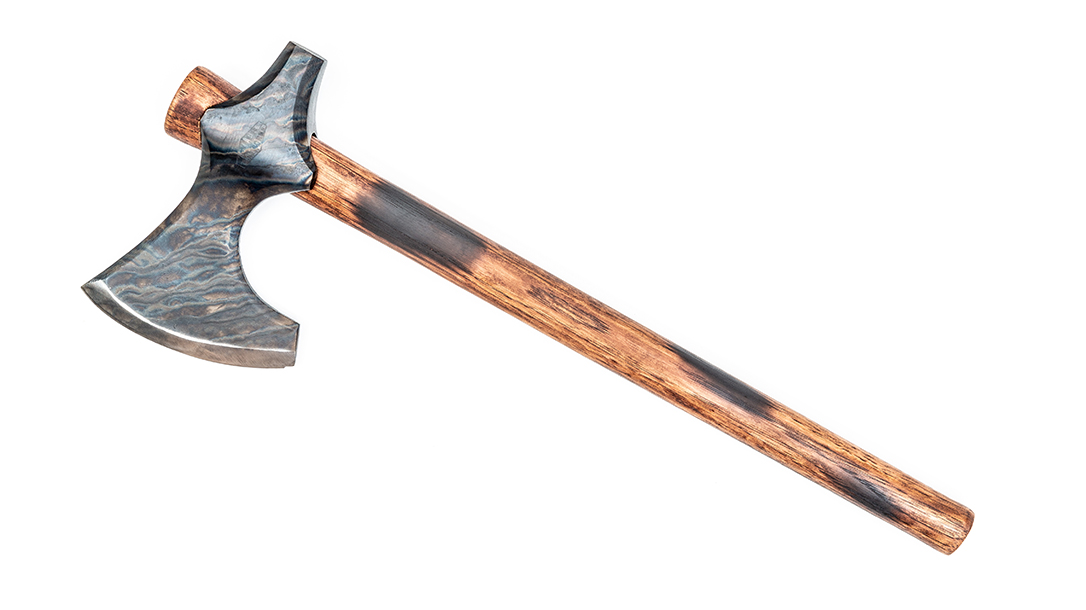In just four short years, Tyler Gun Works has left an indelible mark on the firearms industry. Best known for its remarkable color casehardening and exquisite nitre bluing, the metal refinishing company is now working with 17 different firearms manufacturers to offer customers factory-new guns boasting these colorful finishes. For founder Bobby Tyler, the road hasn’t always been an easy one. A failed business and accompanying debt were but speed bumps for the man who believes that hard work and strong faith can solve nearly any problem.
Running his business from a small shop on his rural property in Friona, Texas, the 38-year-old father of three was determined to start Tyler Gun Works debt free. Initially, he ran the company from a small tornado-damaged building until he accumulated enough business to construct the larger shop he now operates out of. The recent Shootists Holiday, held at the NRA Whittington Center in Raton, New Mexico, provided the opportunity for me to interview the young entrepreneur.
Advertisement — Continue Reading Below
What is color casehardening?
Well, there is casehardening and then there is color casehardening. Casehardening dates back to the late 1700s, and it was a functional process done to harden metal. The beautiful colors were a by-product of that process. But color casehardening for the most part is cosmetic, and that’s what I’m doing. Modern guns with heat-treated steel are hard enough, and re-hardening it will make the parts brittle. So, what we’ve done is develop different processes to get the cosmetic look without heat-treating it.”
Is it a chemical interaction?
It’s all done in a furnace and there are different compounds and chemicals involved. But it’s not a spray-on or paint-on finish. So, it is true color casehardening. But it’s not a chemical finish.
Can you control the colors?
It varies day to day. You’ll see different color casehardening from one day to the next. One day we’ll have beautiful blues, and the next day I’ll have bronze and green that clash with each other. It’s an everyday chemistry project keeping the compounds in line. Most of the patterns and designs come from the quench, which is somewhat controllable.
Advertisement — Continue Reading Below
So quenching parts isn’t just a matter of dumping them into a bucket?
Oh no, that’s where the swirls come from. There’s actually a lot of strategy involved, and I’ve developed a feel for it over time. Different metals respond differently. For example, a 6-inch-long receiver will quench differently than a 3.5-inch-long single-action receiver. You can’t even put them in the same way. It has a lot to do with the grain in the steel. But every piece will yield different results. If I have two identical pieces in each hand and quench them at the same time, they will still look different.
How do you prep the parts beforehand?
We have some nice polishing machines, but mostly we use marble blocks with sandpaper
duct-taped to them. We do a lot of hand polishing. The end result just isn’t comparable. The optimal roughness for color casehardening is 320 grit. That’s a shocker to most people, because everybody thinks that everything has to be 600 grit. But 320 takes it the best — the colors and the penetration are optimal.
We’ve all seen antique guns with faded casehardening. How do your finishes stand the test of time?
That’s a great question! The main things that tear down a color-casehardened finish is UV light (sunlight) and acidity, as in sweat. So what we’ve done is we’ve gone out and found a product that was designed for a totally different use in another industry. It’s a nano product that penetrates into the pores of the steel and seals them. It’s not the thick, waxy, yellow lacquer that looks like Vaseline that you see on some of our competitors’ color casehardening. Ours is always smooth, and our sealer offers a 650-hour salt-spray rating and UV protection. Besides offering protection from corrosion and UV light, the nano sealer also enhances the wearability of the parts, so much so that we also put it on the internals of all the guns we rebuild or finish.
Advertisement — Continue Reading Below
[Bobby removes a custom 1911 from his leather belt holster and presents it as evidence.]
I’ve been carrying this gun for two years without retouching the finish. And the wearability of our product has a great deal of success due to the sealer. We also use this sealer on our nitre bluing. Just look at the thumb safety, slide stop, magazine release and pins.
If you know anything about nitre bluing, you know it’s very fragile. This nitre bluing is two years old, and it looks like I did it yesterday! If someone has a gun they think enough of and goes to the expense to send it to us for nitre bluing or color casehardening, I want it to last for generations. They may have saved up for six months for one of these projects, and “here today, gone tomorrow” isn’t going to work for my customers.
Advertisement — Continue Reading Below
I’ve always heard that stainless steel can’t be casehardened, but you found a way.
That’s what they always told me, too. I just felt like it could be done. So, I researched it and talked to manufacturers and people in the industry, and everybody assured me it absolutely couldn’t be done. Looking outside the box just a little bit, there was a simple solution: I can color caseharden the stainless with the near-same process and use the same furnace. I can do them on the same day with just one minor procedure modification, but it can be done consistently and reliably.
That gives us an alternative finish that we all want on a stainless gun to be able to knock that glare off without having the gun bead blasted, and we still have the durability of the stainless steel. The colors aren’t quite as vibrant or bright as on carbon steel, but I’ve been told by many people that they actually prefer the subdued look of color-casehardened stainless steel to carbon steel.
Advertisement — Continue Reading Below
Tell us about your facility.
We started off in a 16-by-12-foot wooden shed that had been hit by a tornado. A friend gave it to me, and we built the sides on it and worked out of it for a year. That was my shop and my shipping and processing center. It was everything, and it was all I had. I caught it on fire 13 times before I could afford to build my current building. I paid for the big building by working out of that little shed.
In 2016, the new facility was built. It’s a 30-by-40-foot building. I have a separate outbuilding for bluing that’s attached, and I have a separate outbuilding for the color casehardening because of the high temperatures. No air conditioning system in the world that will cool that. I wear a full body suit and a respirator, and I have to wear core packs to keep my body from overheating. Running a furnace in a room at 1,000-plus degrees is tough. I’ve busted the light bulbs and melted the wiring in the building. One time I went to flip the light switch off and it was like a Twizzler!
What do you attribute your success to?
I just went out and pursued and pushed, and I called on companies, and I made free samples for anybody who wanted them. I just told them, “If you send me a sample, I’ll color-case it and send it back to you, and if you like it, call me. If you don’t like it, I won’t ever bother you again.” If I can get a piece in their hands, I can get their business. I’m still reaching and scratching and talking to more companies. I can’t quit. I’m in negotiations with two or three different companies right now about some extremely big production projects. It should be life-changing!
Advertisement — Continue Reading Below
We realize that you have confidentiality agreements with some manufacturers, but who can you tell us about?
I do all of color casehardening for Henry Repeating Arms, which didn’t offer that option until they started working with us. We do all of the color casehardening for Republic Forge 1911s, too. For the Kahr Firearms Group, we do the Magnum Research Desert Eagle pistols, and we’ll be doing an Auto-Ordnance Tommy Gun and matching 1911.
Life hasn’t always been so easy. How did you get to where you are now?
We ran a small retail gun store and tried to make a living fixing and repairing grandpa’s old shotgun. You know, the one that was worth $300, but you couldn’t get parts for it, and it cost $500 of my time to build the parts for it, but I could only charge $60. From 2000 to 2007, we struggled, and that put us back at zero. Below zero, actually.
I went to work for a farmer just to pay my way out of debt from my previous mistakes. We had a paper route. My wife worked full-time, and I did gunsmithing at night. We paid off our debt, but it wasn’t easy. We had two slow cookers — one had rice in it and the other had beans — and my kids’ Christmas gifts came from Goodwill for at least two years. But we’ve been very blessed, and it’s been an unbelievable journey.
Advertisement — Continue Reading Below
When we started over, we decided we were going to do it debt free and build a family- owned business that puts out good work for people who work for a living. Tyler Gun Works started in 2014.
You showed me a Colt Peacemaker that you had restored. Did you actually make the gun’s cylinder?
A guy gave me what was basically a bag of parts last year at the Shootists Holiday, and it was in really rough shape. I found another cylinder for it at a big Tulsa gun show, but the guy wanted $400 for it, which was a little steep for a cylinder that needed fitting and other work. I thanked the gentleman for his time and was walking away when he said, “You’ll buy it from me because I’m the only person here who has one.” That rubbed me the wrong way, so when I got home, I went out to the shop, took a piece of round stock and made one for myself.
How much time do you think you put into that one cylinder?
Way more than $400 worth. I reverse engineered it, and it actually fits the frame a hair better than the old cylinder. Where you put your heart and where you apply yourself, you’ll be successful. All you have to do is try.
Advertisement — Continue Reading Below
Editor’s Note: If you enjoyed reading about and looking at Tyler’s amazing work, you probably have a substantial gun collection at home. Does your home insurance policy cover it? Tyler Gun Works also does professional firearm appraisals to help you protect your investments. For more, visit tylergunworks.com.
